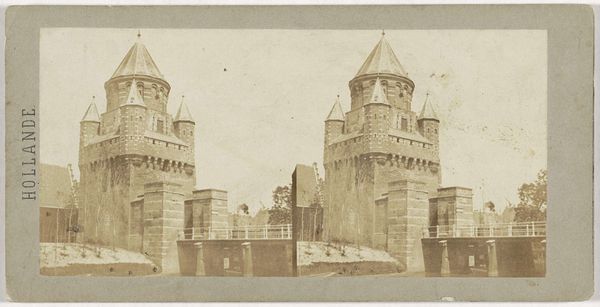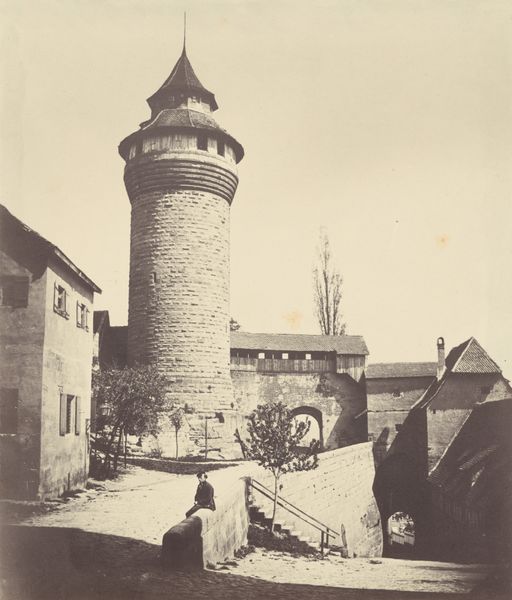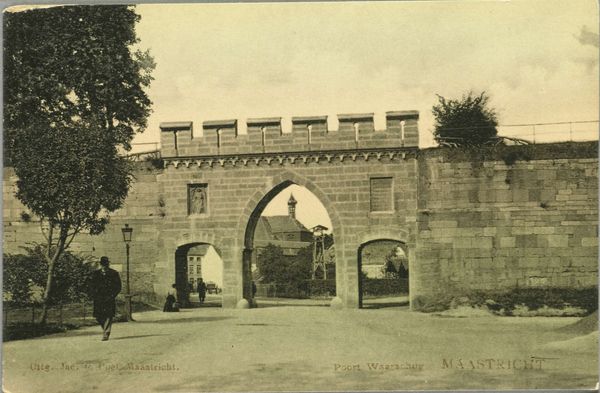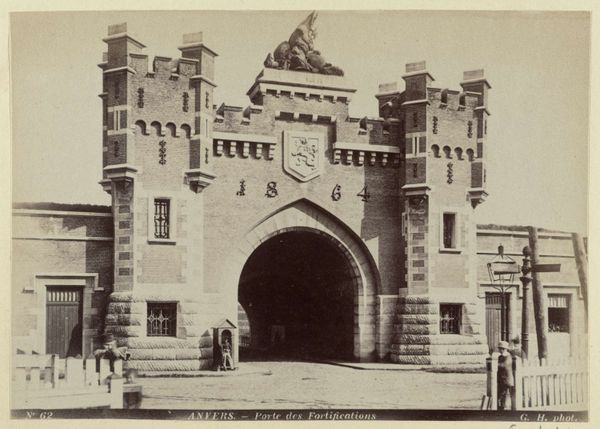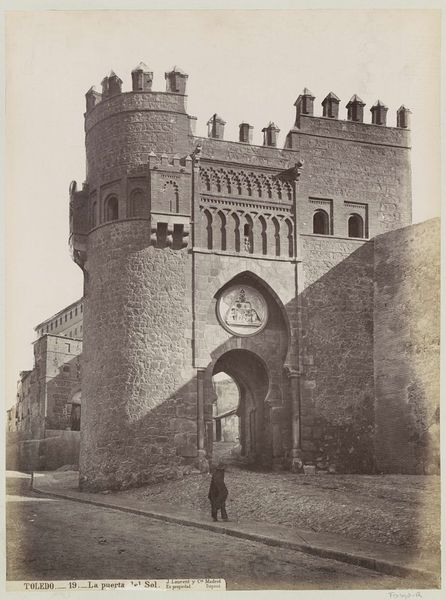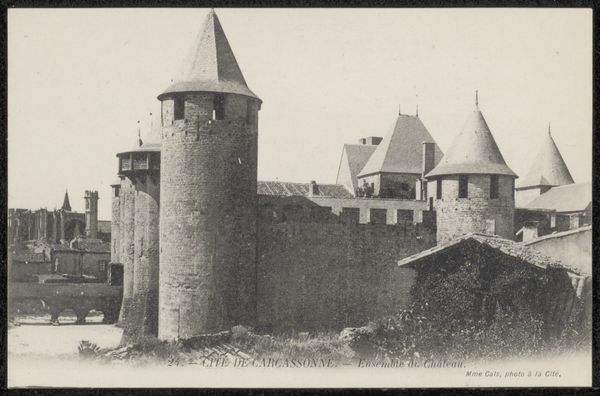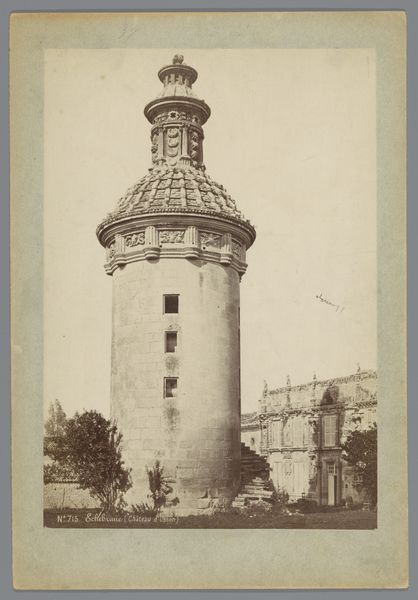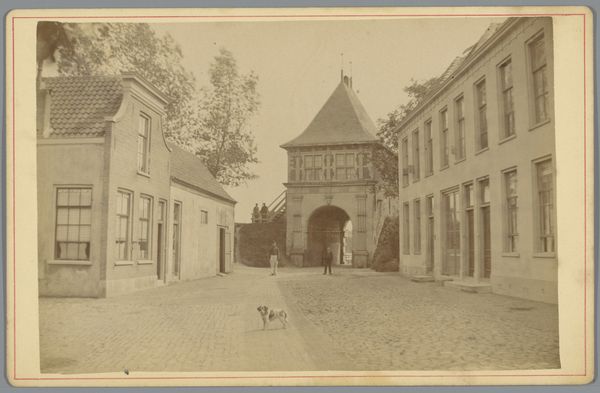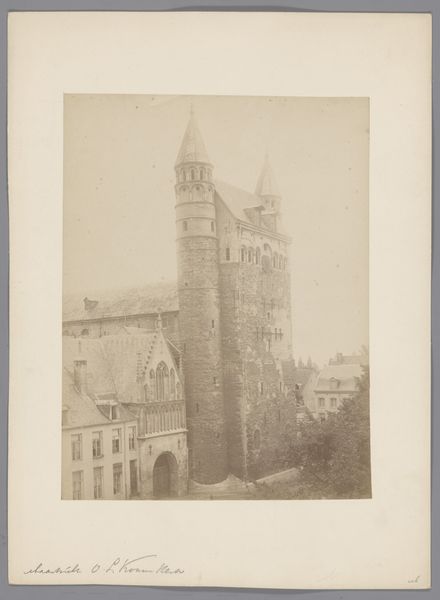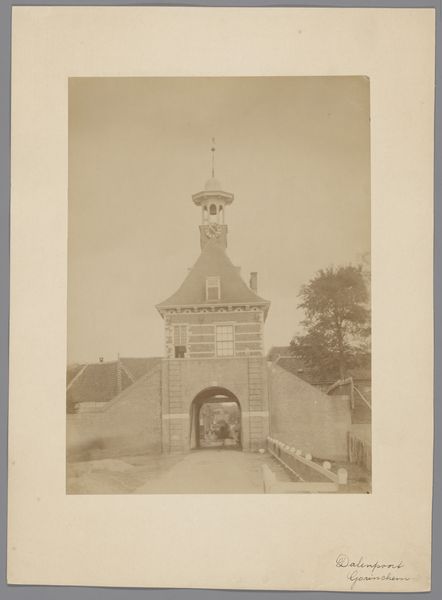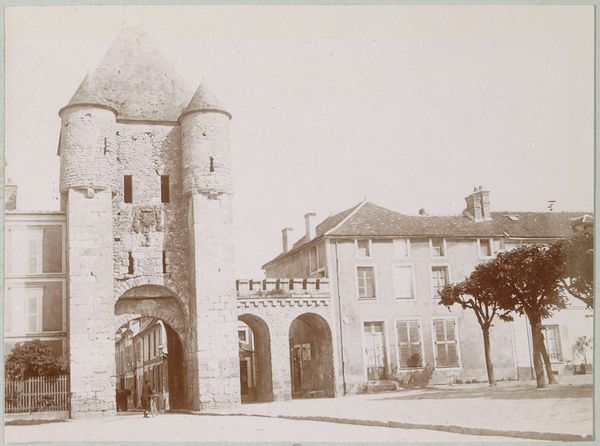
daguerreotype, photography
#
dutch-golden-age
#
daguerreotype
#
photography
#
cityscape
#
realism
Dimensions: height 218 mm, width 158 mm
Copyright: Rijks Museum: Open Domain
Editor: This is Eduard Isaac Asser’s “Gezicht op de Kleine Houtpoort, Haarlem,” made around 1855. It's a daguerreotype, so one of the earliest forms of photography. I’m struck by the texture of the brick and cobblestone, and the monumental presence of the gate. What do you see in this piece? Curator: For me, the daguerreotype itself is key. Consider the labor involved in producing such an image at that time. Each plate was meticulously prepared, exposed, and developed. This wasn't just a snapshot; it was a significant investment of time and resources. Editor: So, it wasn’t a quick process at all… Curator: Absolutely. It represents a moment where art and industrial processes were intersecting in profound ways. This image documents the gate, but it also embodies the dawn of a new means of production for visual culture. The question becomes: how does the materiality of this early photograph shape our understanding of Haarlem, and of urban spaces in general? Editor: It's interesting to think about the photographic process itself being so central to the meaning. Today, we are oversaturated with photographs. Curator: Precisely. This image also documents social change, not just in its architectural subject, but in making images themselves more available to people who could previously only experience the world through drawings, paintings or prints. So, in that regard, we can appreciate its historical weight through its materiality and the labour it embodies. Editor: I hadn't considered the labor involved and how the image represents changing social access. That's a completely different way of thinking about it. Curator: Considering the processes helps you better understand this work as an artifact tied to a specific historical, social and material context.
Comments
No comments
Be the first to comment and join the conversation on the ultimate creative platform.
